Timeless Jewelry Styles - The Ultimate Guide
Jewelry has always been a symbol of elegance and sophistication, and timeless jewelry styles continue to captivate us with their beauty. From classic pearls to sparkling diamonds, vintage pieces to stunning gemstones, there is a style for every taste and occasion. In this ultimate guide, we will explore the history, types, care tips, and key takeaways of each timeless jewelry style, helping you make informed choices and cherish your precious pieces for years to come.
Key Takeaways
- Pearls are a classic jewelry choice that exude elegance and grace.
- Diamonds are forever and their beauty is enhanced by the 4Cs: cut, color, clarity, and carat weight.
- Vintage jewelry offers a unique charm and can be a valuable investment.
- Gold jewelry is versatile and timeless, with different types and purity levels to choose from.
- Gemstone jewelry adds a touch of color and symbolism to any outfit, and proper care ensures their longevity.
The Classic Elegance of Pearls
The History of Pearls
Pearls have a rich history that dates back centuries. Cultured pearls are the most common type of pearls available today. They are created by inserting an irritant into an oyster or mussel, which then forms a pearl around it. The process of cultivating pearls was first developed in the early 20th century by Kokichi Mikimoto, a Japanese entrepreneur. Since then, cultured pearls have become highly sought after for their lustrous beauty and timeless appeal.
When it comes to natural pearls, they are extremely rare and valuable. These pearls are formed without any human intervention, making them even more precious. Natural pearls were once the exclusive domain of royalty and the wealthy elite. Today, they are considered a symbol of elegance and sophistication.
Pearl Types:
| Type | Description |
|---|---|
| Akoya Pearls | Known for their classic white color and high luster. |
| Freshwater Pearls | Available in a variety of colors and shapes. |
| South Sea Pearls | Known for their large size and golden hues. |
Caring for Pearls:
- Avoid exposing pearls to harsh chemicals, such as perfume or hairspray.
- Wipe pearls gently with a soft cloth after wearing them to remove any oils or dirt.
- Store pearls separately from other jewelry to prevent scratching.
Tip: To maintain the luster of your pearls, it's recommended to have them restrung every few years.
Different Types of Pearls
When it comes to pearls, there are several different types to choose from. Each type has its own unique characteristics and beauty. Here are some of the most popular types of pearls:
- Akoya Pearls: Known for their lustrous appearance and high quality, Akoya pearls are classic and elegant.
- Freshwater Pearls: These pearls are known for their affordability and wide range of colors.
- Tahitian Pearls: With their dark and exotic colors, Tahitian pearls add a touch of sophistication to any jewelry piece.
- South Sea Pearls: These pearls are prized for their large size and natural golden hues.
When choosing pearls, it's important to consider your personal style and preferences. Whether you prefer the classic elegance of Akoya pearls or the exotic allure of Tahitian pearls, there is a type of pearl that will suit your taste.
Tip: When caring for your pearls, make sure to avoid exposing them to harsh chemicals and store them separately from other jewelry to prevent scratching.
How to Care for Pearls
Caring for pearls is essential to maintain their luster and longevity. Here are some tips to help you keep your pearls in pristine condition:
-
Handle with care: Pearls are delicate and can easily scratch or chip. Avoid dropping them or exposing them to harsh chemicals.
-
Store properly: Keep your pearls separate from other jewelry to prevent scratching. Store them in a soft pouch or a lined jewelry box.
-
Clean gently: Use a soft, damp cloth to wipe your pearls after wearing them. Avoid using harsh cleaners or abrasive materials.
Pro tip: Apply perfume, hairspray, and other beauty products before putting on your pearls to avoid damaging them.
Taking proper care of your pearls will ensure that they remain beautiful and last for generations to come.
The Timeless Beauty of Diamonds
The 4Cs of Diamonds
When it comes to diamonds, the 4Cs are crucial in determining their quality and value. The 4Cs stand for color, clarity, cut, and carat weight. Let's take a closer look at each of these factors:
- Color: The color of a diamond refers to the presence of any tint or hue. The most valuable diamonds are colorless, while those with a slight yellow or brown tint are less valuable.
- Clarity: Clarity measures the presence of any internal or external flaws, known as inclusions and blemishes. The fewer the flaws, the higher the clarity grade.
- Cut: The cut of a diamond determines its brilliance and sparkle. It refers to how well the diamond has been shaped and faceted. A well-cut diamond reflects light beautifully.
- Carat Weight: Carat weight refers to the size of the diamond. It is a measure of the diamond's weight, with one carat equal to 200 milligrams.
Remember, when buying a diamond, consider the 4Cs to ensure you're getting a high-quality and valuable gem.
Popular Diamond Cuts
When it comes to diamond jewelry, the cut of the diamond plays a crucial role in determining its brilliance and sparkle. There are several popular diamond cuts that are widely recognized for their beauty and elegance. Here are some of the most popular diamond cuts:
- Round Brilliant Cut: This is the most popular and classic diamond cut, known for its exceptional brilliance and fire. It has 58 facets that maximize the reflection of light.
- Princess Cut: This square-shaped cut is known for its modern and contemporary look. It has sharp corners and brilliant facets that enhance the diamond's sparkle.
- Emerald Cut: This rectangular-shaped cut features step-like facets that create a unique optical appearance. It is known for its elegant and sophisticated look.
When choosing a diamond cut, it's important to consider your personal style and preferences. Each diamond cut has its own unique characteristics and beauty, so choose the one that speaks to you the most.
Diamond Jewelry Care Tips
Taking proper care of your diamond jewelry is essential to maintain its brilliance and beauty. Here are some tips to help you keep your diamonds looking their best:
-
Regular Cleaning: Clean your diamond jewelry regularly using a mild soap and warm water solution. Gently scrub the jewelry with a soft brush to remove any dirt or residue.
-
Safe Storage: Store your diamond jewelry in a soft pouch or a separate compartment in your jewelry box to prevent scratching or damage.
-
Avoid Chemicals: Avoid exposing your diamond jewelry to harsh chemicals, such as chlorine or bleach, as they can damage the metal setting and affect the diamond's sparkle.
-
Professional Inspection: Have your diamond jewelry inspected by a professional jeweler at least once a year to check for loose stones or any other issues.
Remember, proper care and maintenance will ensure that your diamond jewelry remains as stunning as the day you first received it.
The Allure of Vintage Jewelry
Exploring Different Eras of Vintage Jewelry
Vintage jewelry encompasses a wide range of styles from different eras, each with its own unique characteristics. Here are some key eras to explore:
-
Art Nouveau: Known for its intricate designs inspired by nature, Art Nouveau jewelry features flowing lines and motifs such as flowers, insects, and mythical creatures.
-
Art Deco: Popular in the 1920s and 1930s, Art Deco jewelry is characterized by geometric shapes, bold colors, and a sleek, modern aesthetic.
-
Victorian: Reflecting the reign of Queen Victoria from 1837 to 1901, Victorian jewelry often incorporates sentimental symbols like hearts, flowers, and bows.
-
Edwardian: Named after King Edward VII, Edwardian jewelry is known for its delicate and feminine designs, featuring filigree work, lace-like patterns, and intricate metalwork.
-
Mid-Century Modern: Emerging in the 1940s and 1950s, Mid-Century Modern jewelry showcases clean lines, abstract forms, and innovative materials like plastic and enamel.
When collecting vintage jewelry, it's important to consider the era and style that resonates with you. Each era has its own charm and story to tell, making vintage pieces a unique addition to any jewelry collection.
Collecting and Investing in Vintage Pieces
When it comes to collecting and investing in vintage jewelry, there are a few key factors to consider:
-
Authenticity: Ensure that the vintage piece you are interested in is authentic. Look for hallmarks, signatures, or other indicators of the piece's origin.
-
Condition: The condition of the vintage piece is crucial. Look for any signs of damage or wear, as this can affect its value.
-
Rarity: Rarity plays a significant role in the value of vintage jewelry. Pieces that are rare or hard to find are often more valuable.
-
Provenance: Provenance refers to the history and ownership of a piece. Jewelry with a notable provenance can be highly sought after.
-
Market Value: Research the current market value of similar vintage pieces to ensure you are paying a fair price.
-
Investment Potential: Vintage jewelry can be a great investment, but it's important to do your research and consult with experts before making any significant purchases.
Remember, collecting and investing in vintage jewelry can be a rewarding and enjoyable experience, but it's essential to educate yourself and make informed decisions.
Restoring and Maintaining Vintage Jewelry
Vintage jewelry requires special care to preserve its beauty and value. Here are some tips to help you restore and maintain your precious pieces:
1. Clean with care: When cleaning vintage jewelry, it's important to use gentle methods to avoid damaging delicate materials. Avoid harsh chemicals and abrasive cleaners. Instead, use a soft cloth or a mild jewelry cleaner specifically designed for vintage pieces.
2. Store properly: Proper storage is crucial to prevent damage and maintain the quality of vintage jewelry. Keep your pieces in a jewelry box or a soft pouch to protect them from scratches and dust. Avoid storing them in direct sunlight or extreme temperatures.
3. Seek professional help: If your vintage jewelry requires extensive restoration or repair, it's best to seek the assistance of a professional jeweler. They have the expertise and tools to handle delicate vintage pieces and ensure they are restored to their former glory.
Tip: Regular maintenance and inspections can help identify any issues early on and prevent further damage to your vintage jewelry.
The Enduring Charm of Gold
Different Types of Gold Jewelry
When it comes to gold jewelry, there are several different types to choose from. Each type has its own unique characteristics and appeal. Here are some of the most popular types of gold jewelry:
- Yellow Gold: This is the most traditional and classic type of gold jewelry. It has a warm, rich color that is often associated with luxury and elegance.
- White Gold: White gold is created by mixing yellow gold with other metals, such as silver or palladium. It has a silvery-white appearance and is a popular choice for engagement rings and wedding bands.
- Rose Gold: Rose gold has a pinkish hue that gives it a romantic and feminine look. It is created by adding copper to yellow gold.
When choosing gold jewelry, consider your personal style and preferences. Whether you prefer the timeless elegance of yellow gold, the modern appeal of white gold, or the romantic charm of rose gold, there is a type of gold jewelry that will suit your taste.
Understanding Gold Purity
Gold purity is measured in karats, with 24 karat gold being the purest form. 24 karat gold is composed of 100% gold, making it highly valuable and sought after. However, pure gold is also very soft and malleable, which makes it less suitable for everyday jewelry.
To increase durability and strength, gold is often alloyed with other metals. Common alloys include 18 karat gold, which contains 75% gold and 25% other metals, and 14 karat gold, which contains 58.3% gold and 41.7% other metals.
When purchasing gold jewelry, it's important to consider the karatage. Higher karat gold has a richer color and higher value, but it may also be more prone to scratches and wear. Lower karat gold is more durable and affordable, but it may have a slightly paler color.
Here are some key points to remember about gold purity:
- 24 karat gold is the purest form, but it is less durable.
- 18 karat gold contains 75% gold and is a popular choice for high-quality jewelry.
- 14 karat gold contains 58.3% gold and is more affordable and durable.
Tip: When buying gold jewelry, look for the karat stamp to ensure its purity and value.
Cleaning and Storing Gold Jewelry
When it comes to cleaning and storing your gold jewelry, there are a few important things to keep in mind.
Firstly, it's essential to use the right cleaning methods and products to avoid damaging your gold pieces. Gentle cleaning solutions specifically designed for gold jewelry are recommended. Avoid using harsh chemicals or abrasive materials that can scratch or tarnish the gold.
Secondly, after cleaning your gold jewelry, make sure to dry it thoroughly before storing. Moisture can cause gold to tarnish, so it's important to remove any excess water or moisture.
To store your gold jewelry, it's best to keep each piece separate to prevent scratching or tangling. You can use individual jewelry pouches or soft cloth bags to protect your gold pieces. Additionally, storing your gold jewelry in a cool and dry place, away from direct sunlight, can help maintain its shine and prevent tarnishing.
Remember, regular cleaning and proper storage are key to keeping your gold jewelry looking its best and ensuring its longevity.
The Sophistication of Gemstones
Popular Gemstone Varieties
Gemstones come in a wide variety of colors, each with its own unique characteristics and meanings. Here are some popular gemstone varieties:
- Ruby: Known for its vibrant red color, the ruby symbolizes passion and love.
- Sapphire: With its deep blue hue, sapphires are associated with wisdom and royalty.
- Emerald: The emerald's lush green color represents growth and harmony.
- Amethyst: This purple gemstone is believed to promote calmness and spiritual clarity.
When choosing a gemstone, consider not only its color but also its durability and suitability for the intended piece of jewelry. It's important to care for gemstone jewelry properly to maintain its beauty and value.
Tip: Avoid exposing gemstone jewelry to harsh chemicals or extreme temperatures, as these can damage the gemstones.
Meanings and Symbolism of Gemstones
Gemstones have been cherished for centuries for their beauty and the meanings they hold. Each gemstone is believed to possess unique qualities and symbolism. Here are some popular gemstones and their associated meanings:
- Amethyst: Known for its calming properties and ability to enhance spirituality.
- Rose Quartz: Represents love, compassion, and emotional healing.
- Sapphire: Symbolizes wisdom, loyalty, and nobility.
Gemstones can be a meaningful addition to your jewelry collection, allowing you to express your personality and beliefs. Whether you choose a gemstone based on its color, meaning, or simply because you're drawn to its beauty, wearing gemstone jewelry can be a powerful way to connect with the energy and symbolism of these precious stones.
Tip: When selecting gemstone jewelry, consider the meaning and symbolism of the gemstone to find one that resonates with you and aligns with your intentions.
Caring for Gemstone Jewelry
Gemstone jewelry requires special care to maintain its beauty and longevity. Here are some tips to help you keep your gemstone jewelry looking its best:
-
Cleaning: Gently clean your gemstone jewelry with a soft cloth or a mild soap solution. Avoid using harsh chemicals or ultrasonic cleaners, as they can damage the gemstones.
-
Storing: Store your gemstone jewelry separately to prevent scratches. Use a soft pouch or a jewelry box with compartments to keep each piece safe.
-
Avoiding Exposure: Protect your gemstone jewelry from exposure to harsh chemicals, extreme temperatures, and direct sunlight. These can cause fading or damage to the gemstones.
-
Regular Inspections: Regularly inspect your gemstone jewelry for any loose stones or signs of damage. If you notice any issues, take your jewelry to a professional jeweler for repair.
Remember, proper care and maintenance will ensure that your gemstone jewelry remains beautiful for years to come.
Conclusion
In conclusion, timeless jewelry styles are a must-have for any fashion enthusiast. Whether it's the elegance of a diamond necklace, the sophistication of a pearl bracelet, or the glamour of a vintage-inspired gold ring, these classic pieces never go out of style. They add a touch of class and sophistication to any outfit, making them the perfect accessory for any occasion. So, invest in timeless jewelry pieces and elevate your style to a whole new level.
Frequently Asked Questions
Are pearls expensive?
The price of pearls can vary greatly depending on factors such as the type of pearl, size, shape, color, luster, and surface quality. Generally, natural pearls are more expensive than cultured pearls.
How do I choose the right diamond cut?
The choice of diamond cut depends on personal preference and the desired appearance. Popular diamond cuts include round brilliant, princess, cushion, emerald, and marquise.
Can vintage jewelry be resized?
In most cases, vintage jewelry can be resized by a professional jeweler. However, it is important to consult with a jeweler who specializes in vintage pieces to ensure proper resizing and preservation of the piece's integrity.
Is gold jewelry hypoallergenic?
Pure gold (24 karat) is hypoallergenic, but it is too soft for everyday wear. Most gold jewelry is made with alloys to increase its durability, and these alloys can potentially cause allergic reactions in some individuals.
How do I clean gemstone jewelry?
The best way to clean gemstone jewelry is to use a mild soap and warm water. Gently scrub the jewelry with a soft brush, rinse thoroughly, and pat dry with a soft cloth. Avoid using harsh chemicals or ultrasonic cleaners, as they can damage certain gemstones.
Can I wear pearls with other types of jewelry?
Yes, pearls can be easily paired with other types of jewelry to create a stylish and sophisticated look. They complement both gold and silver jewelry, as well as gemstone pieces.
Best Sellers













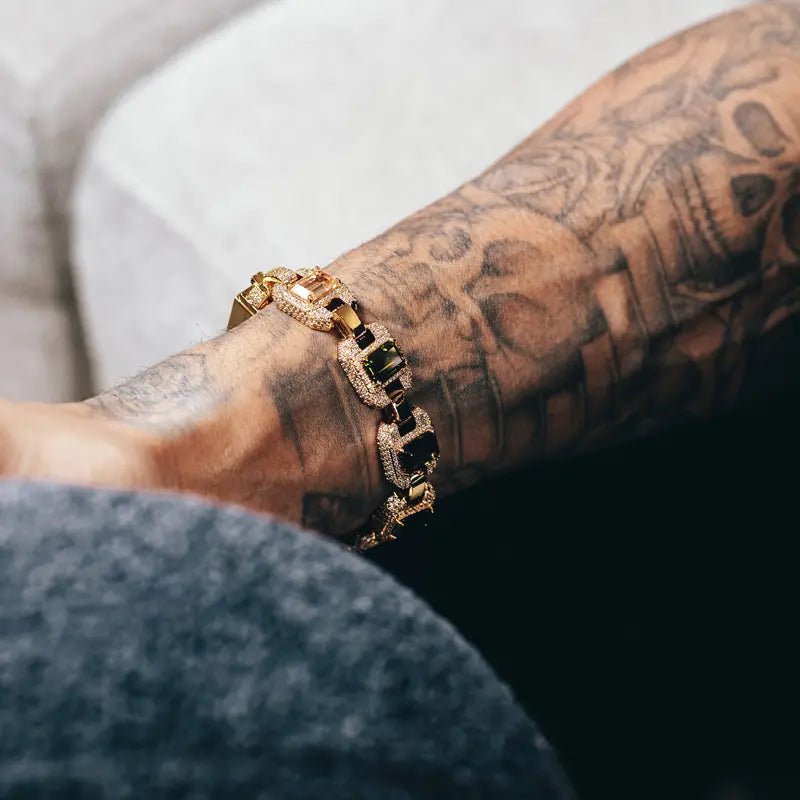
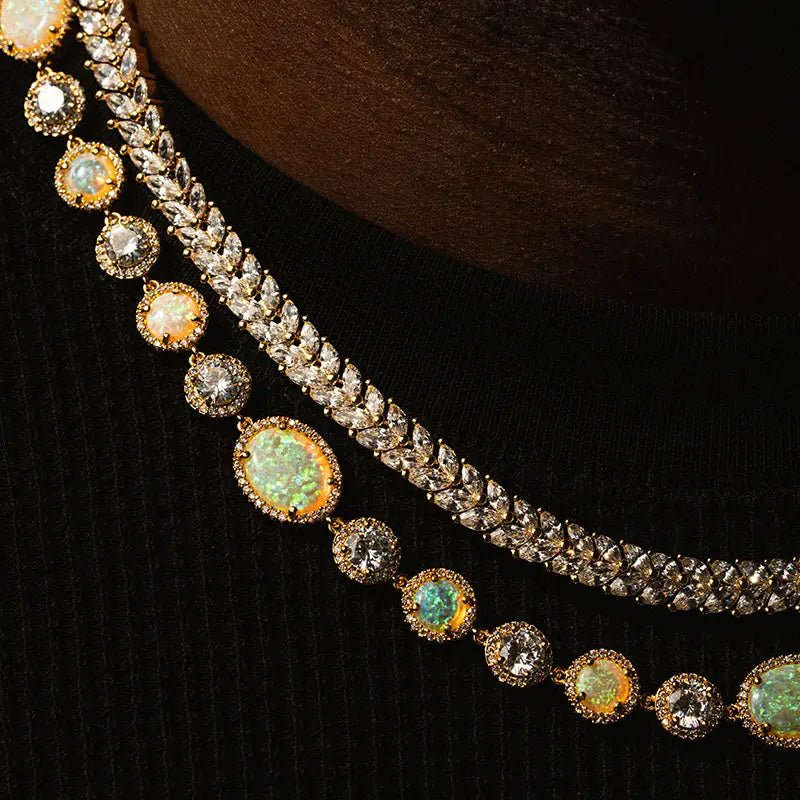
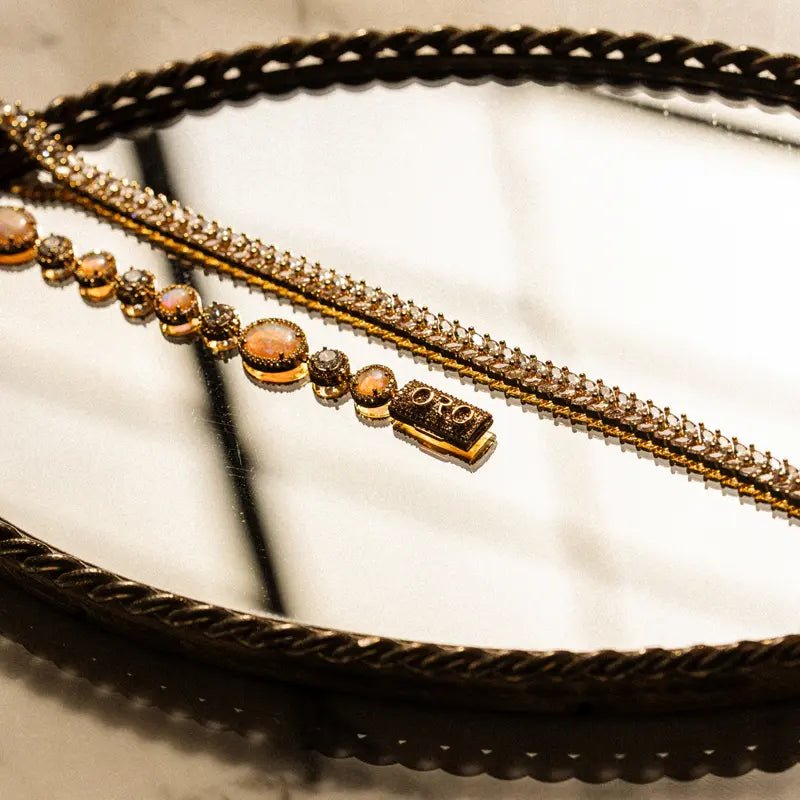
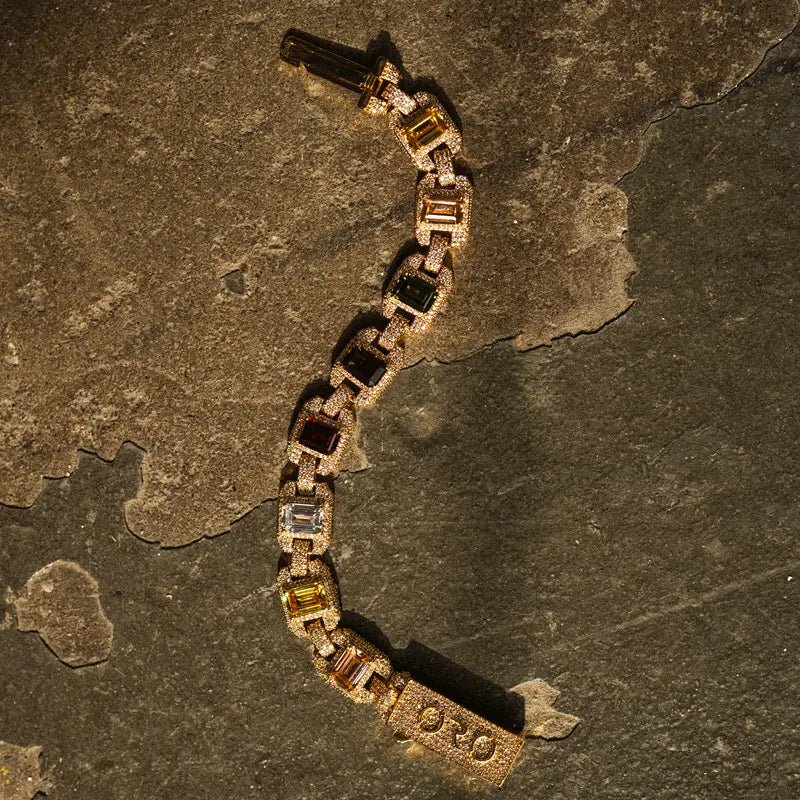
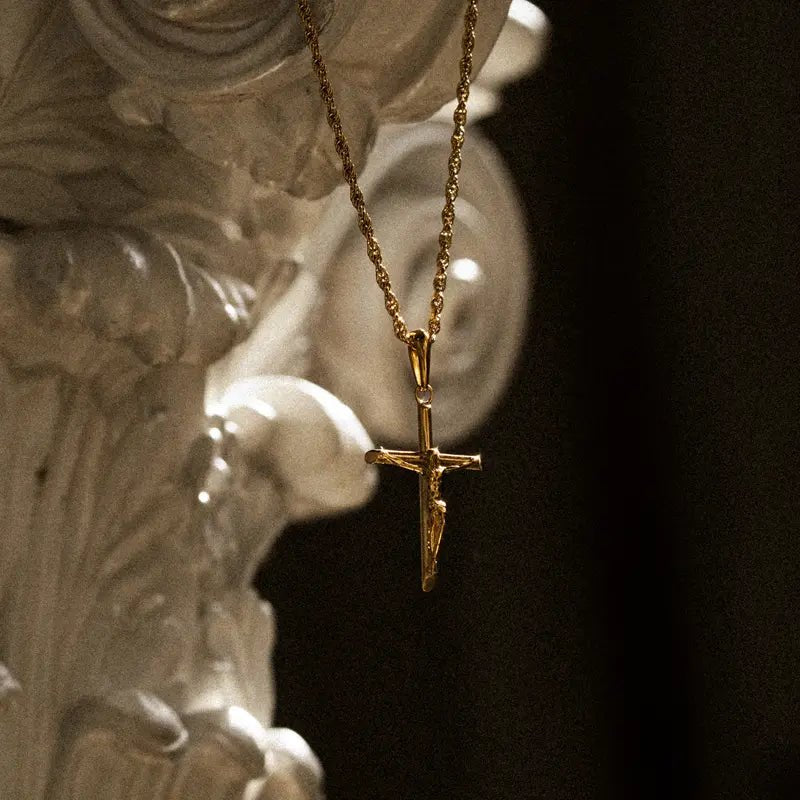
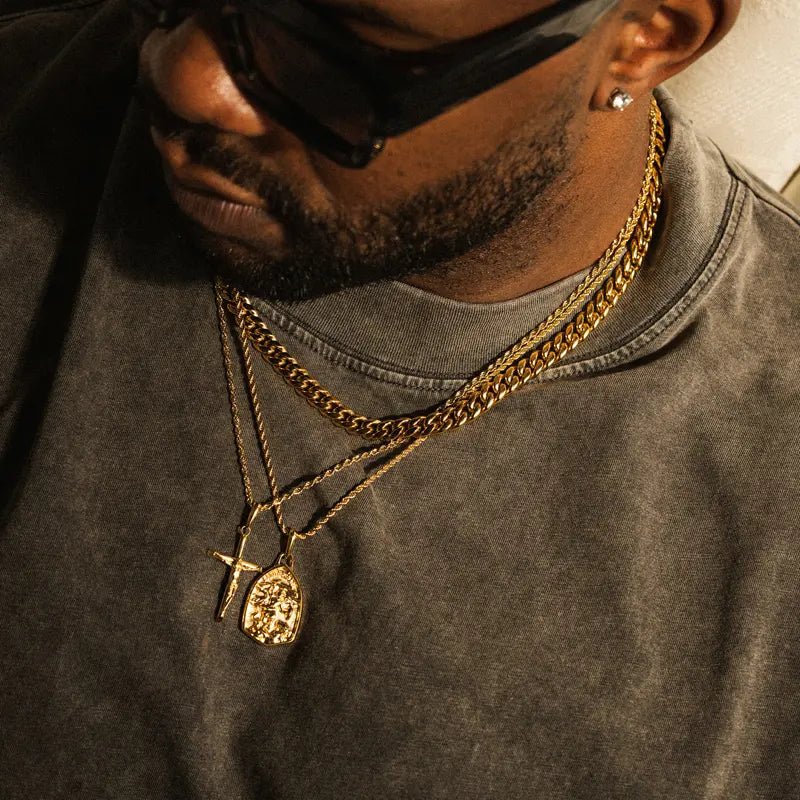


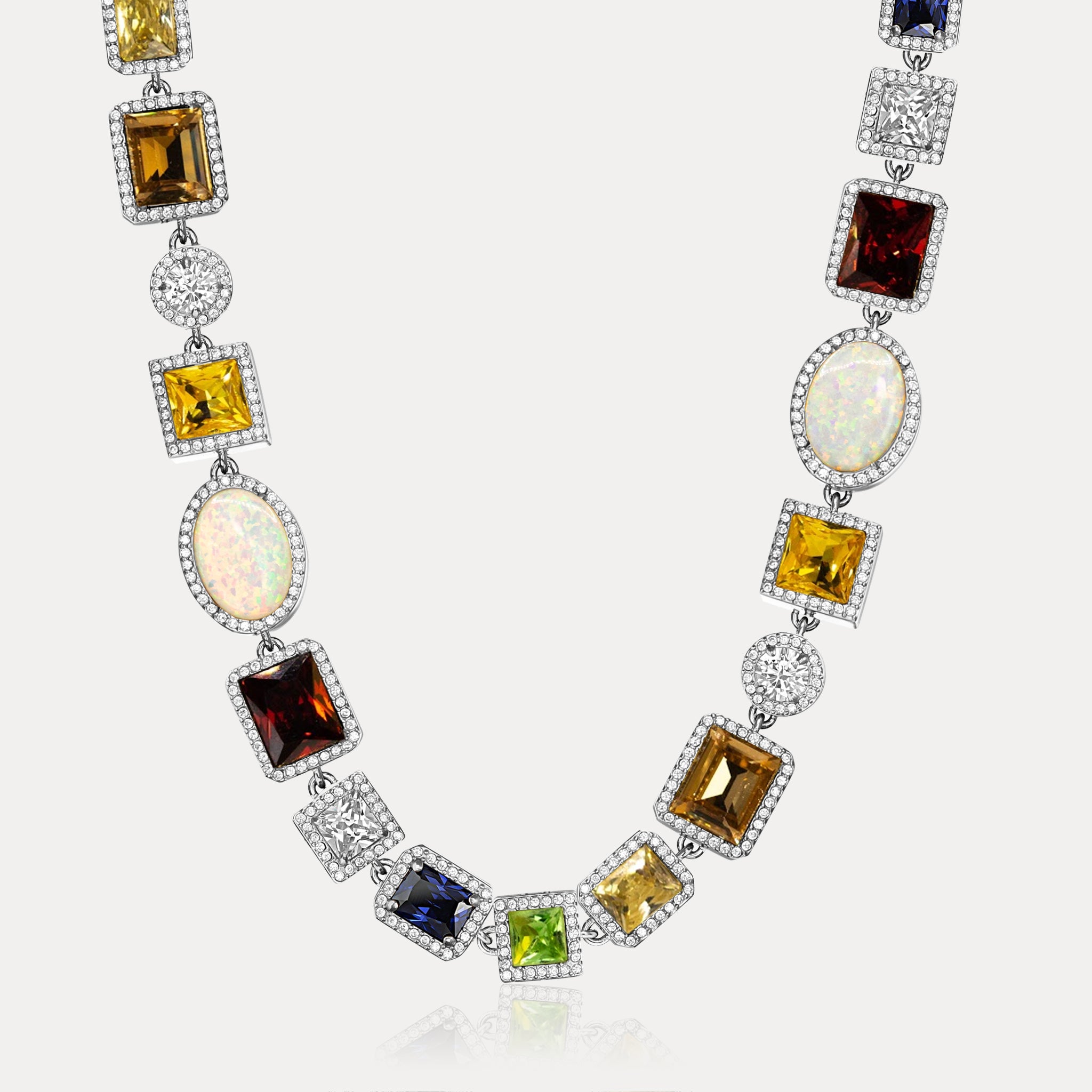
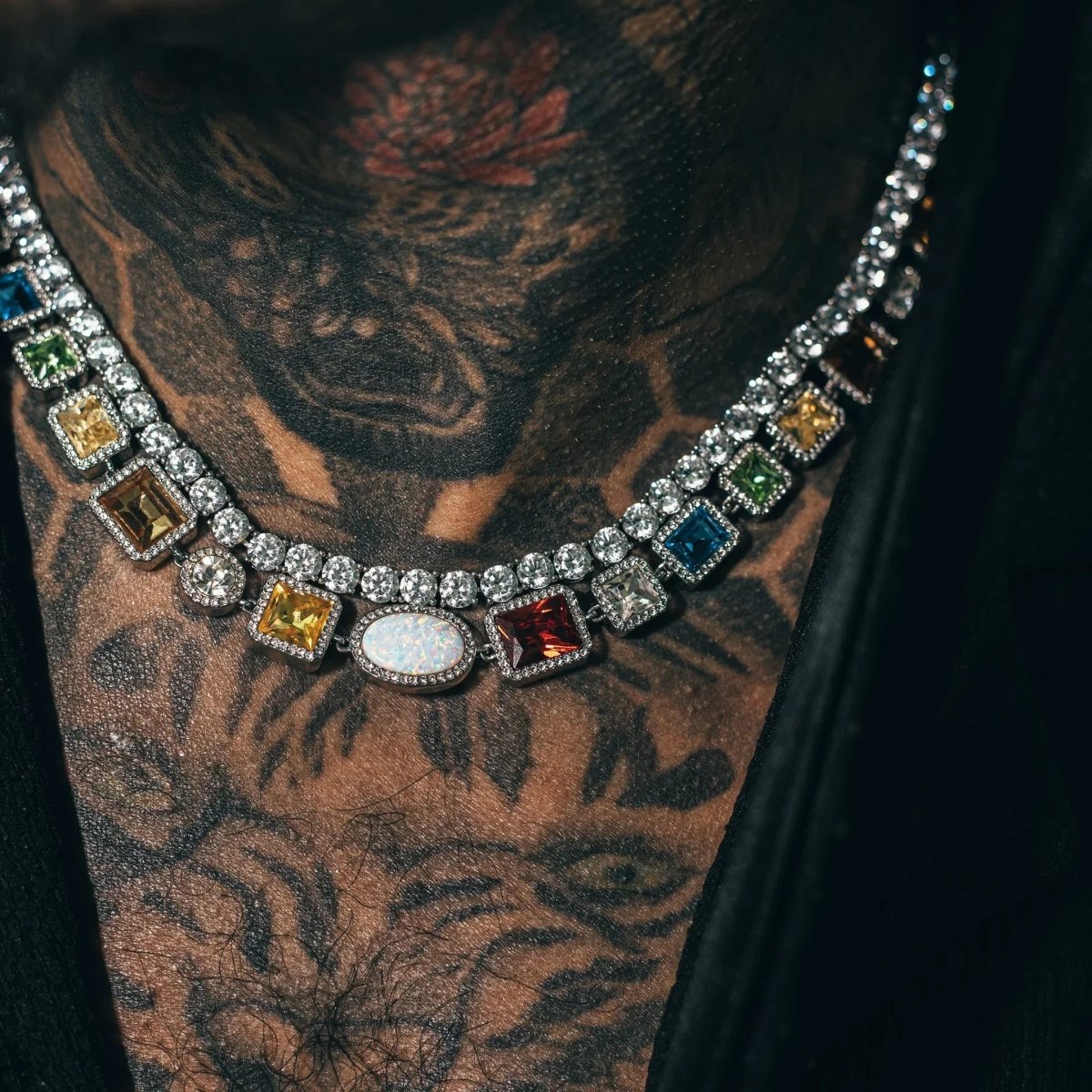
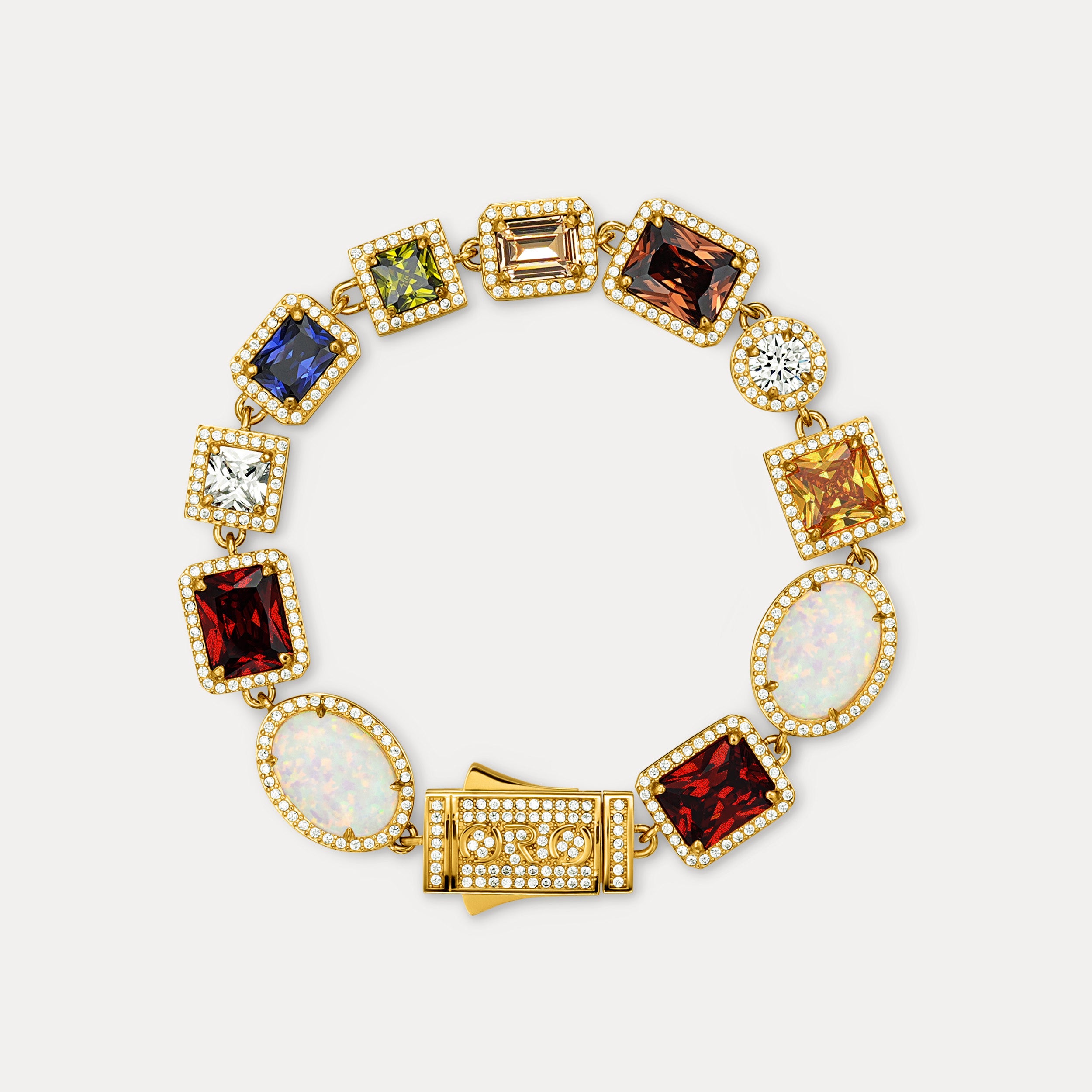

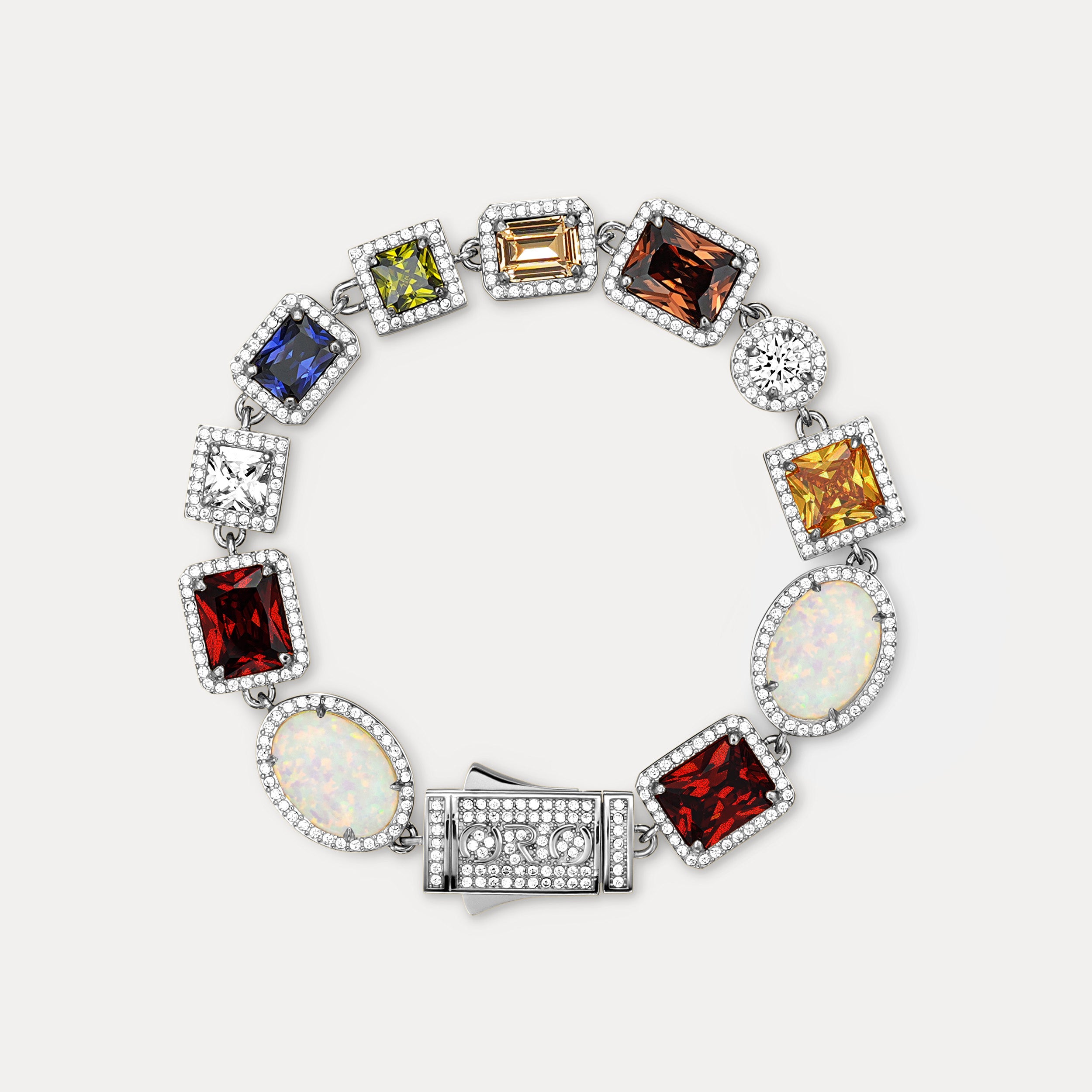

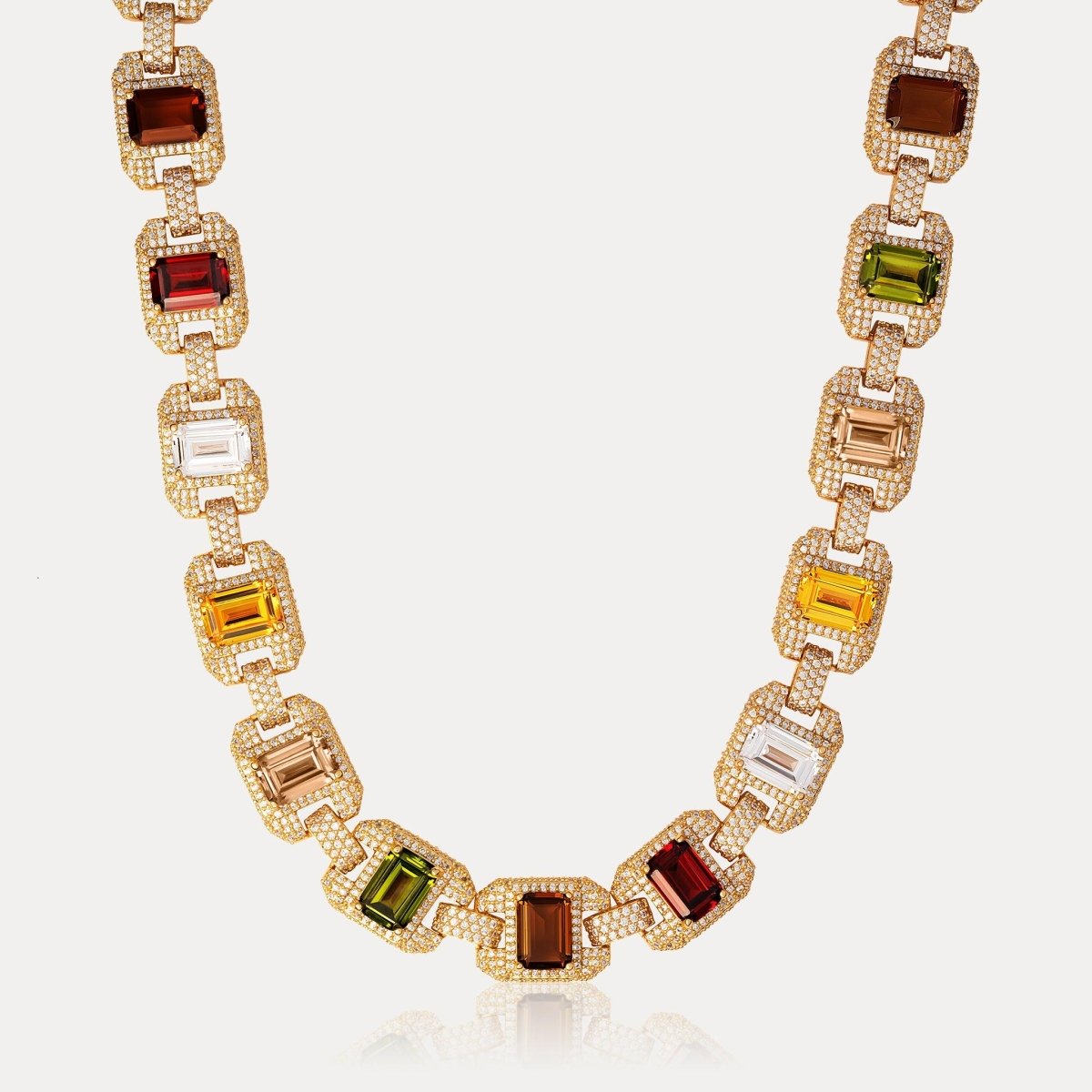
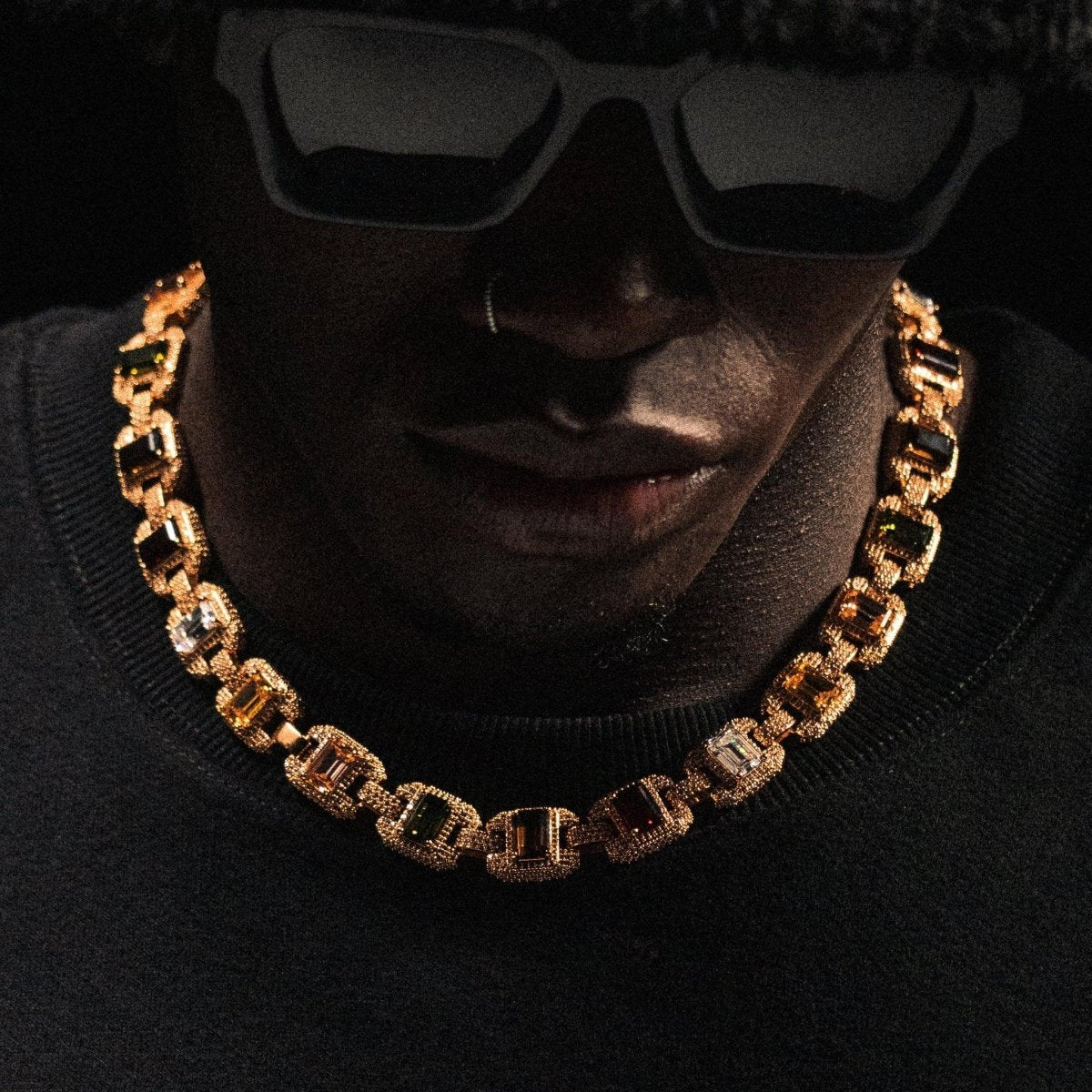


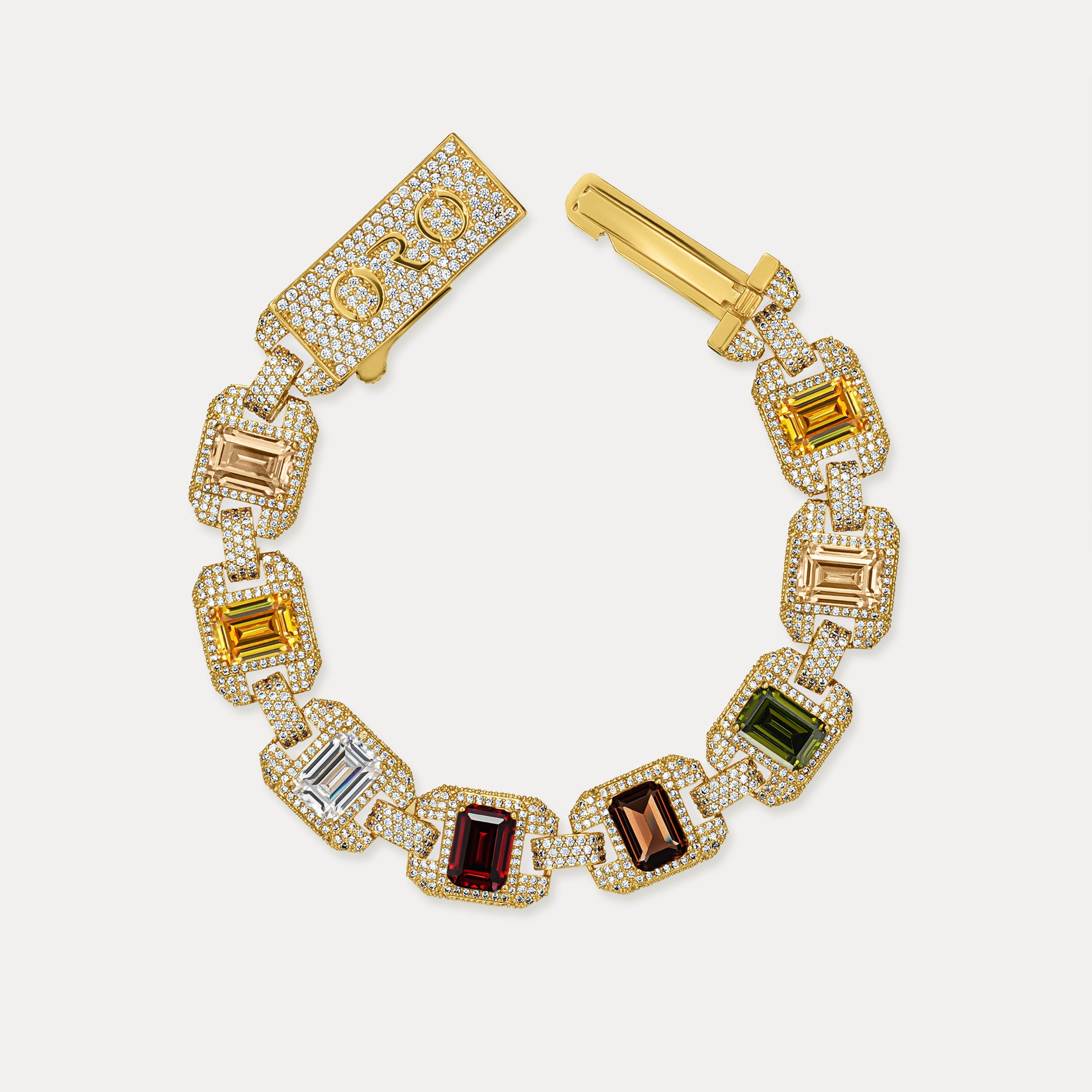

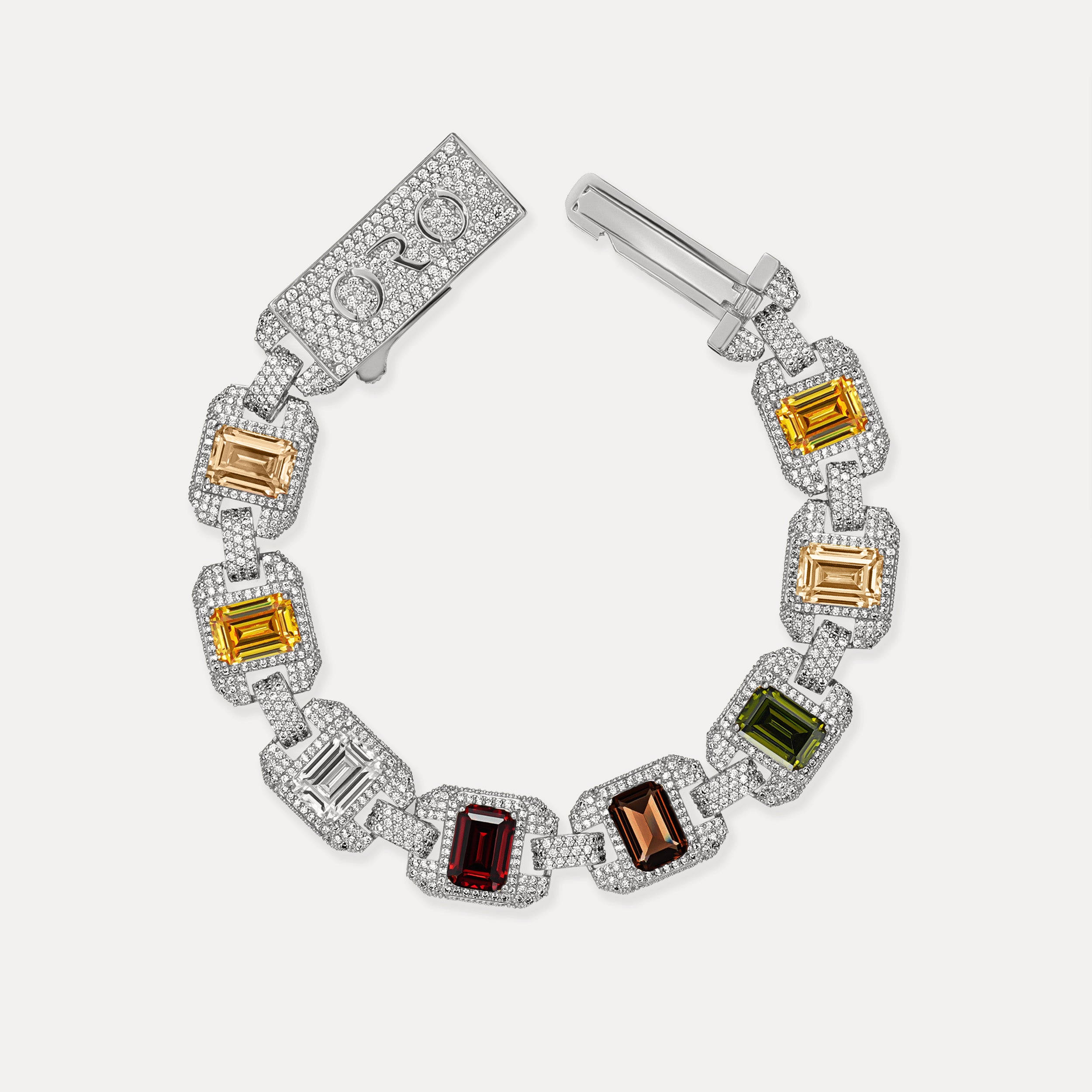

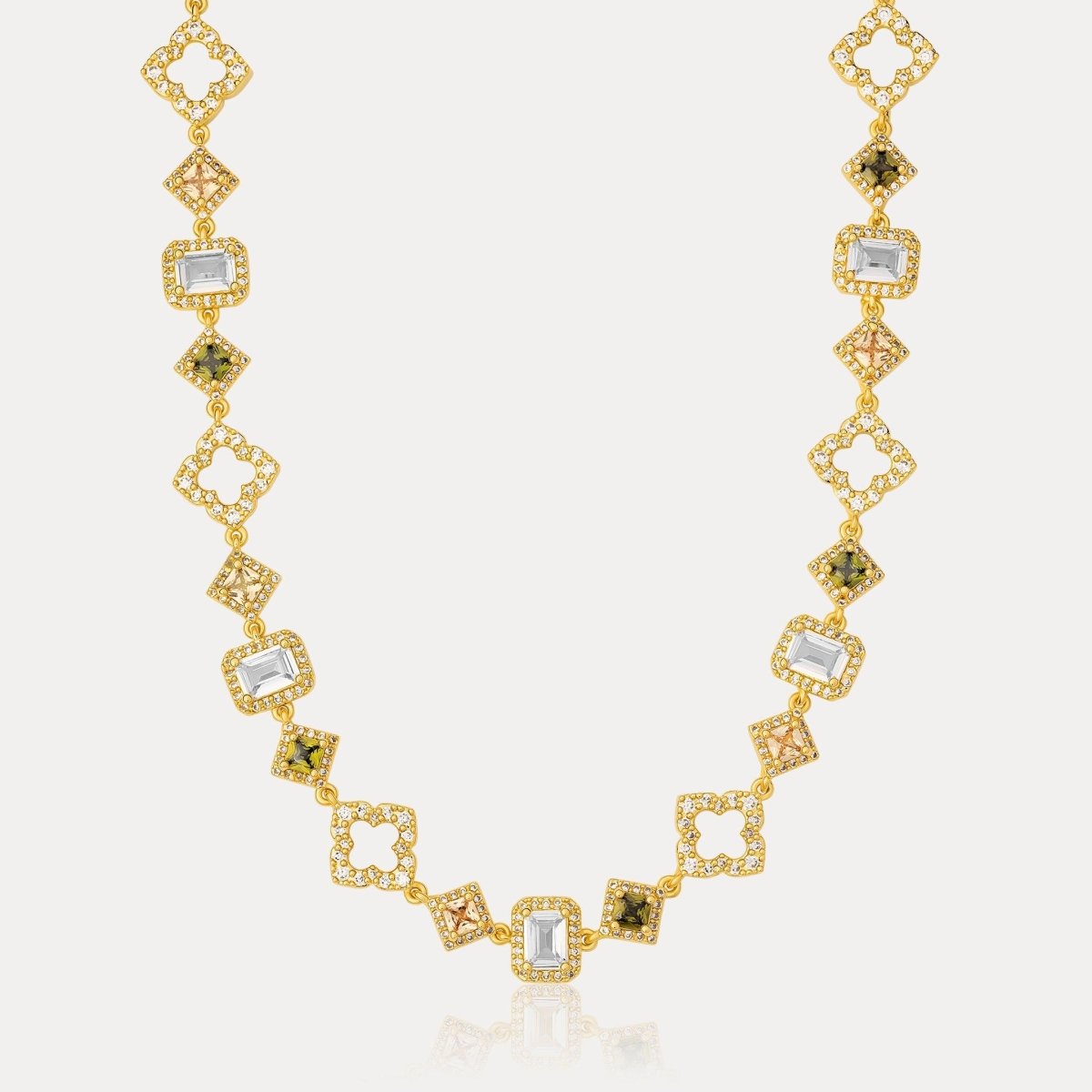
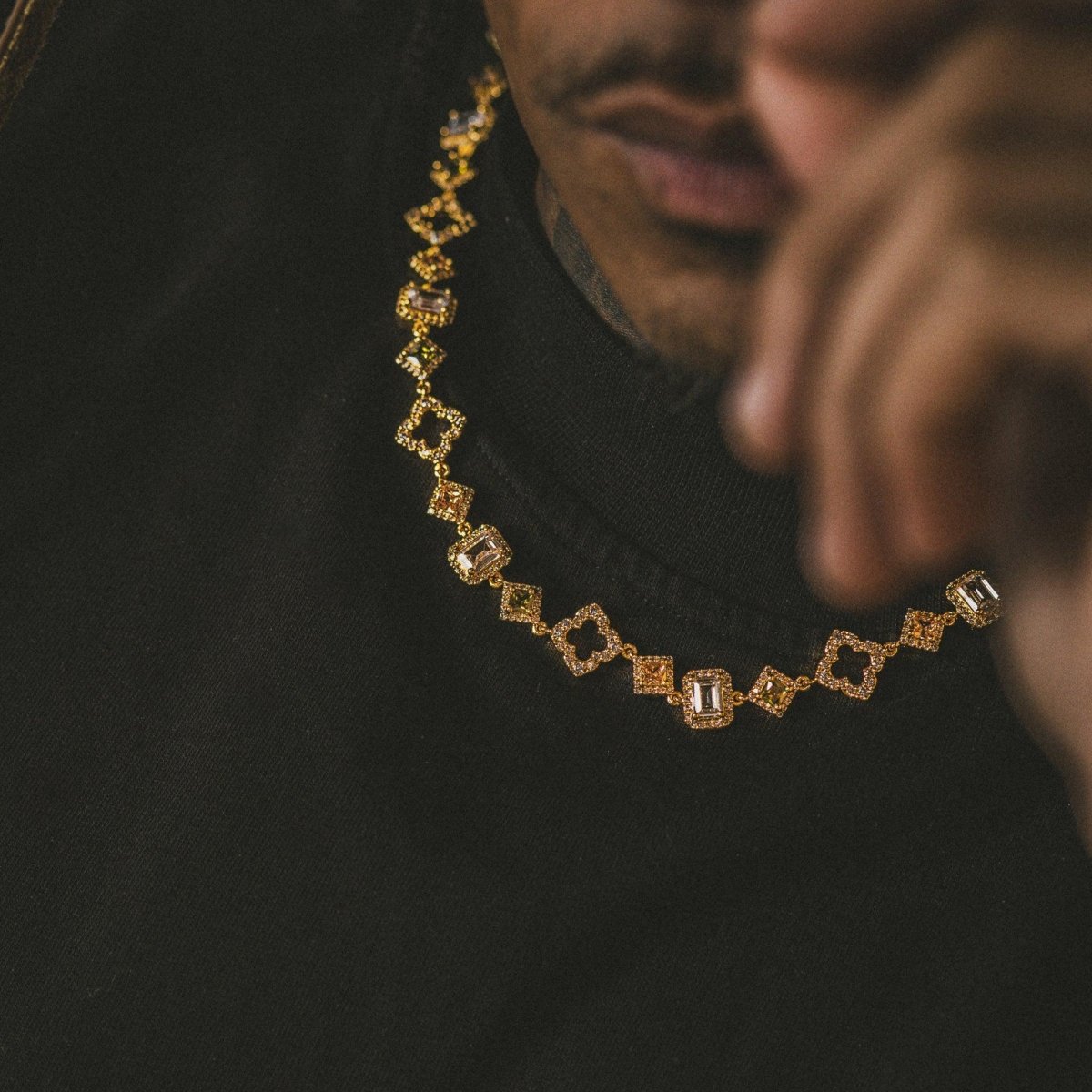
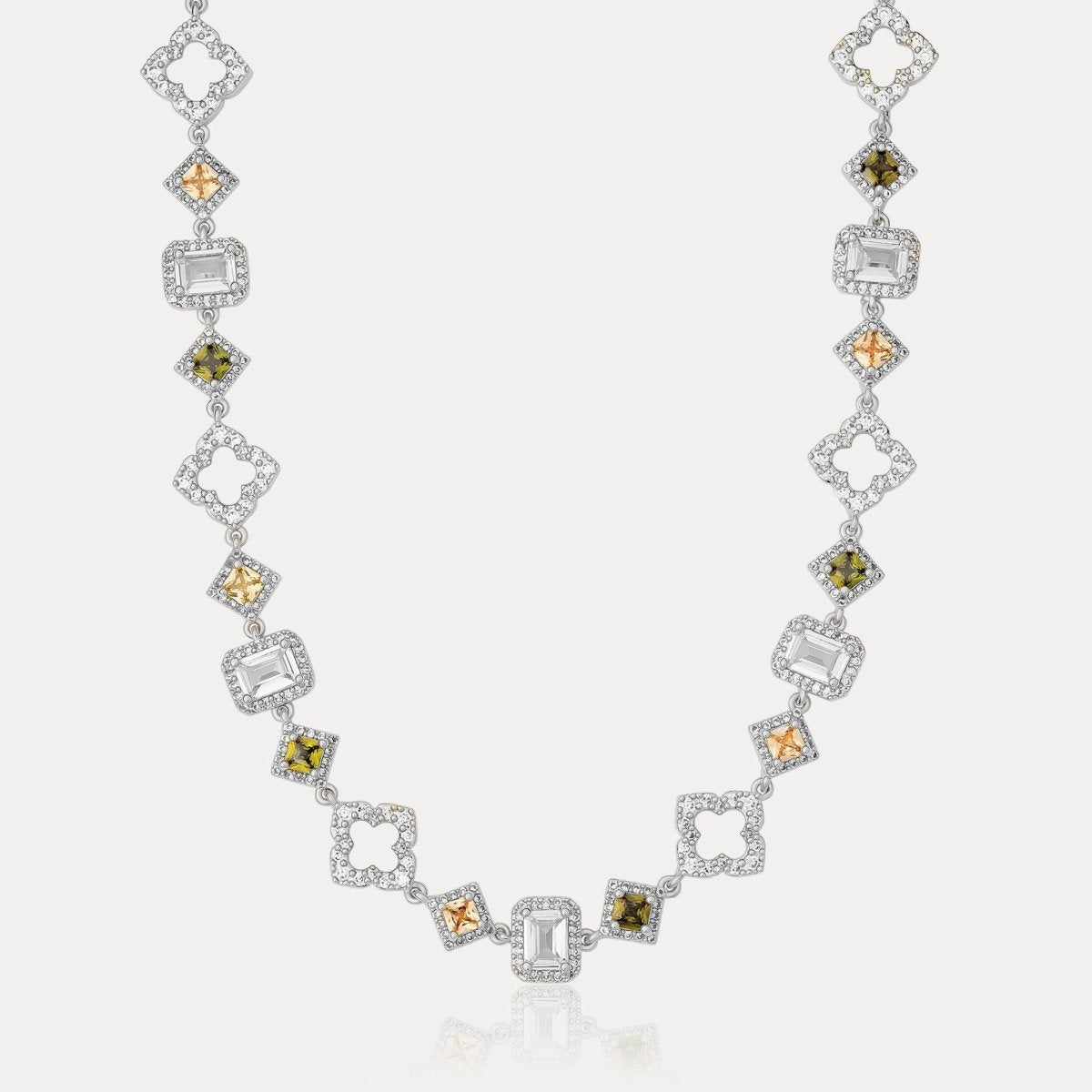

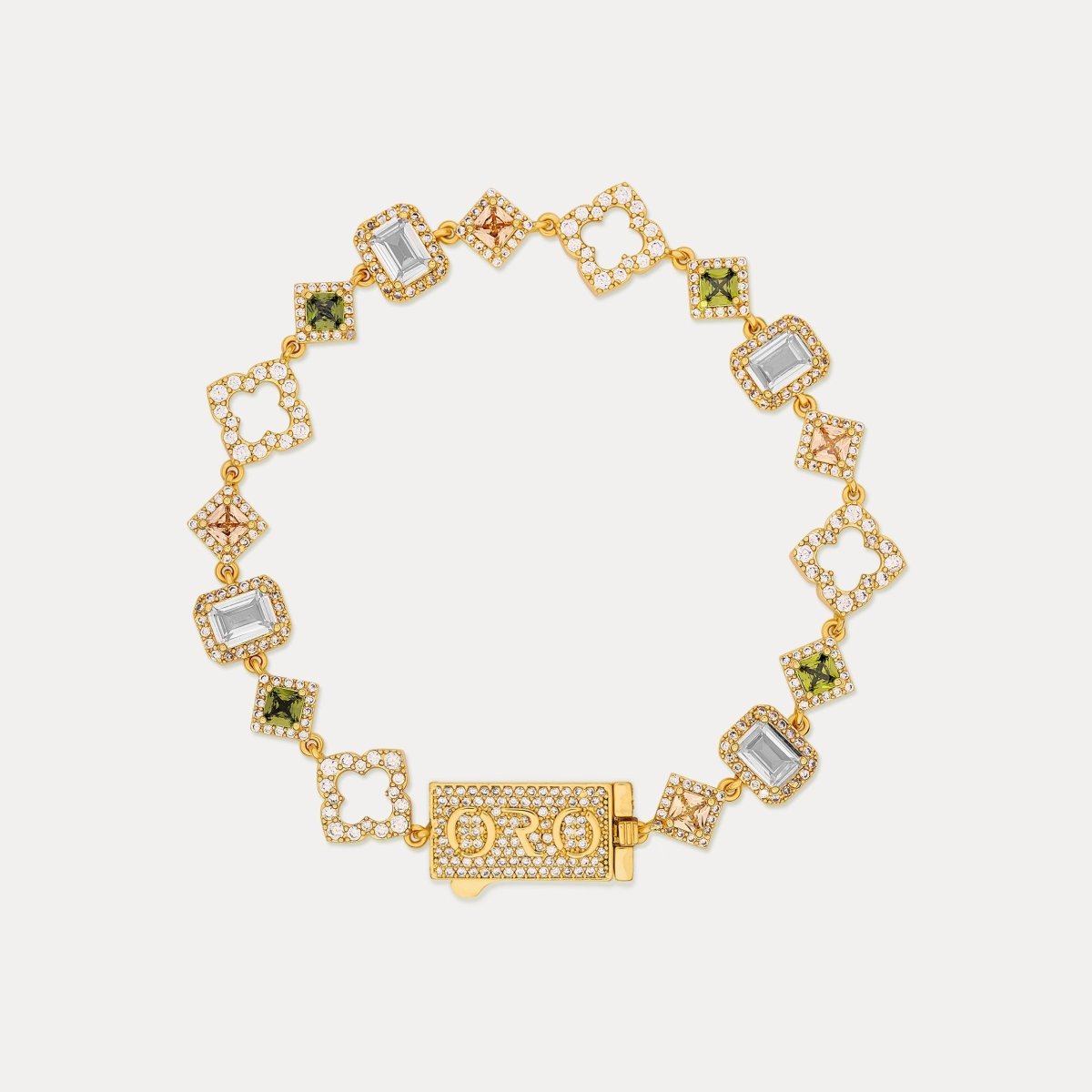
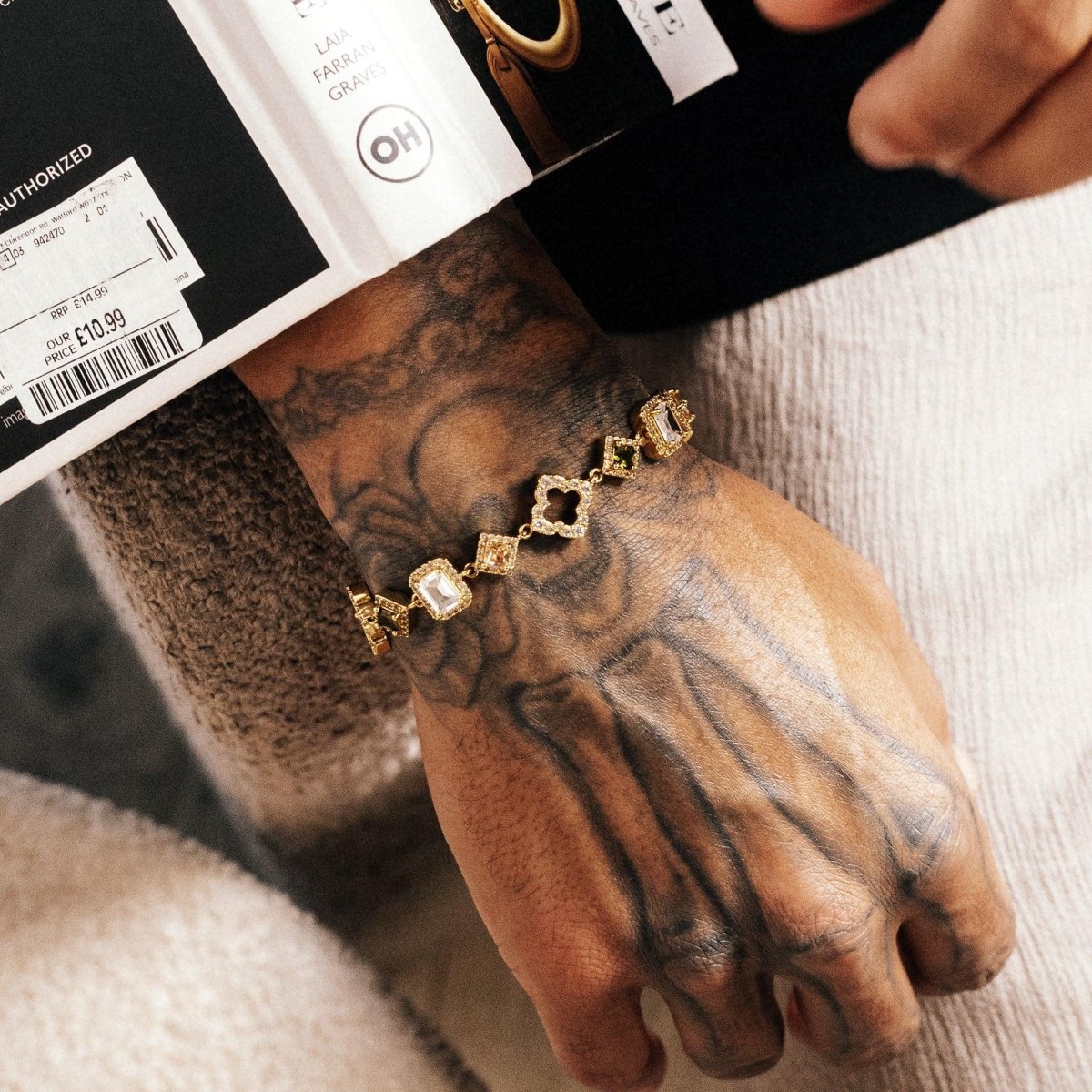

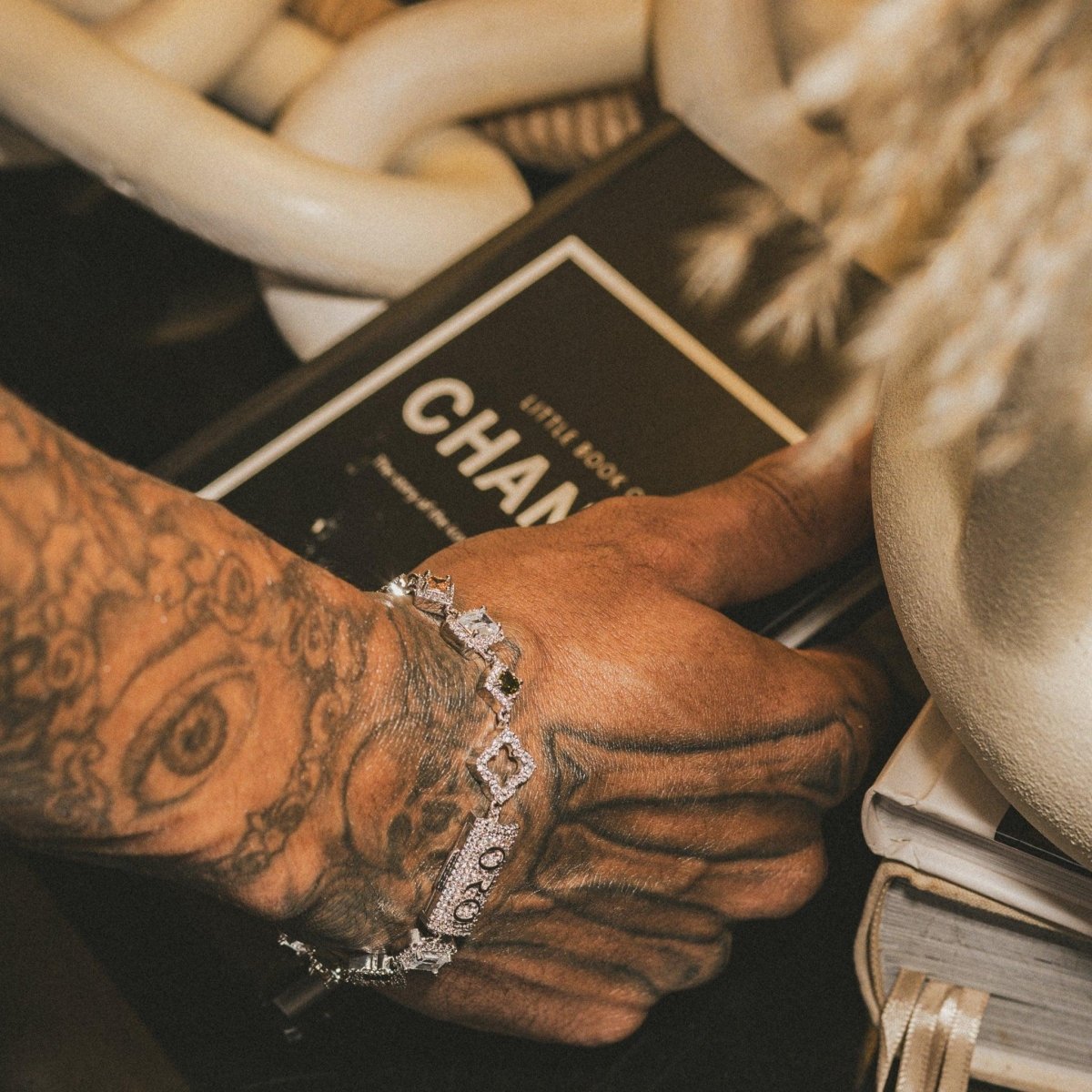
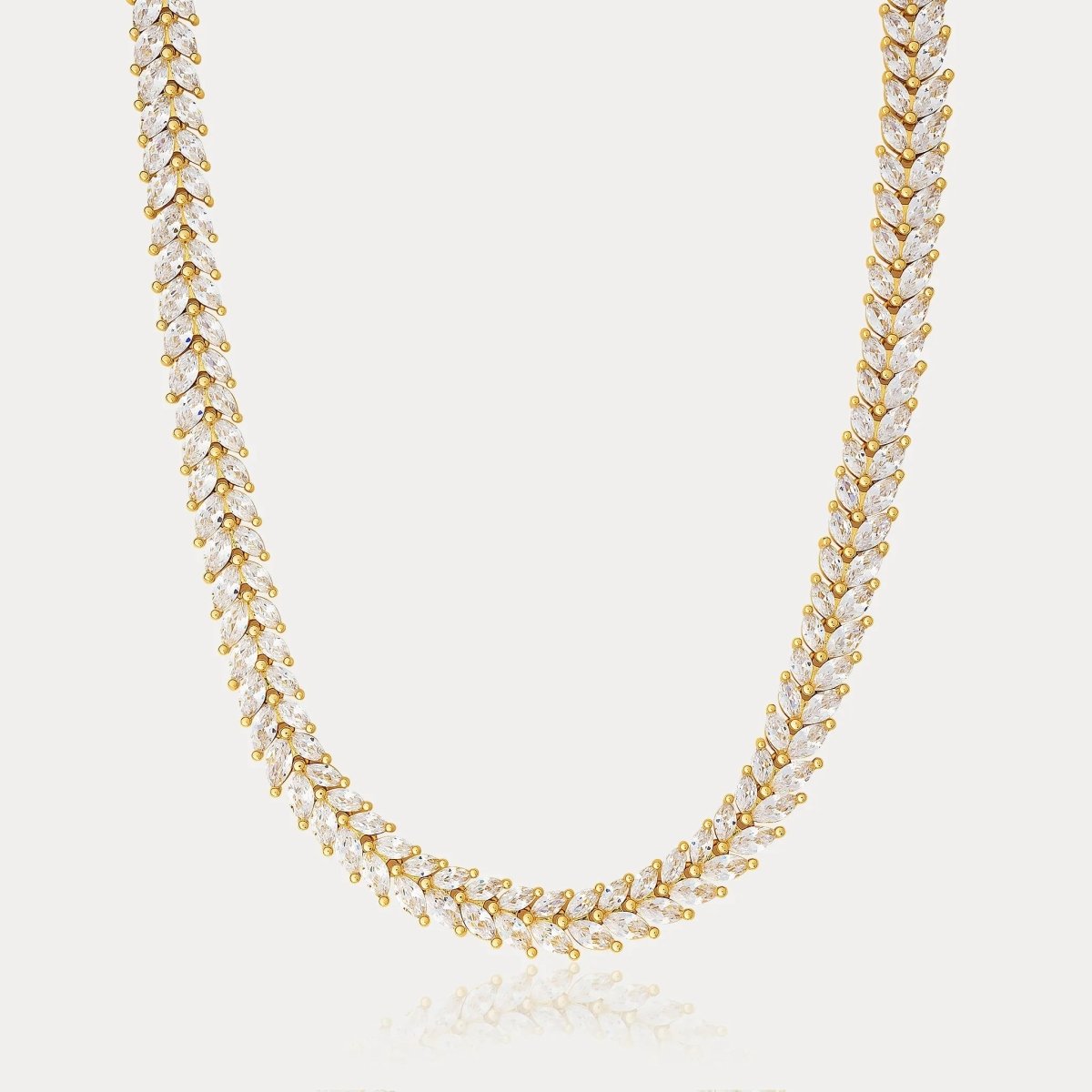
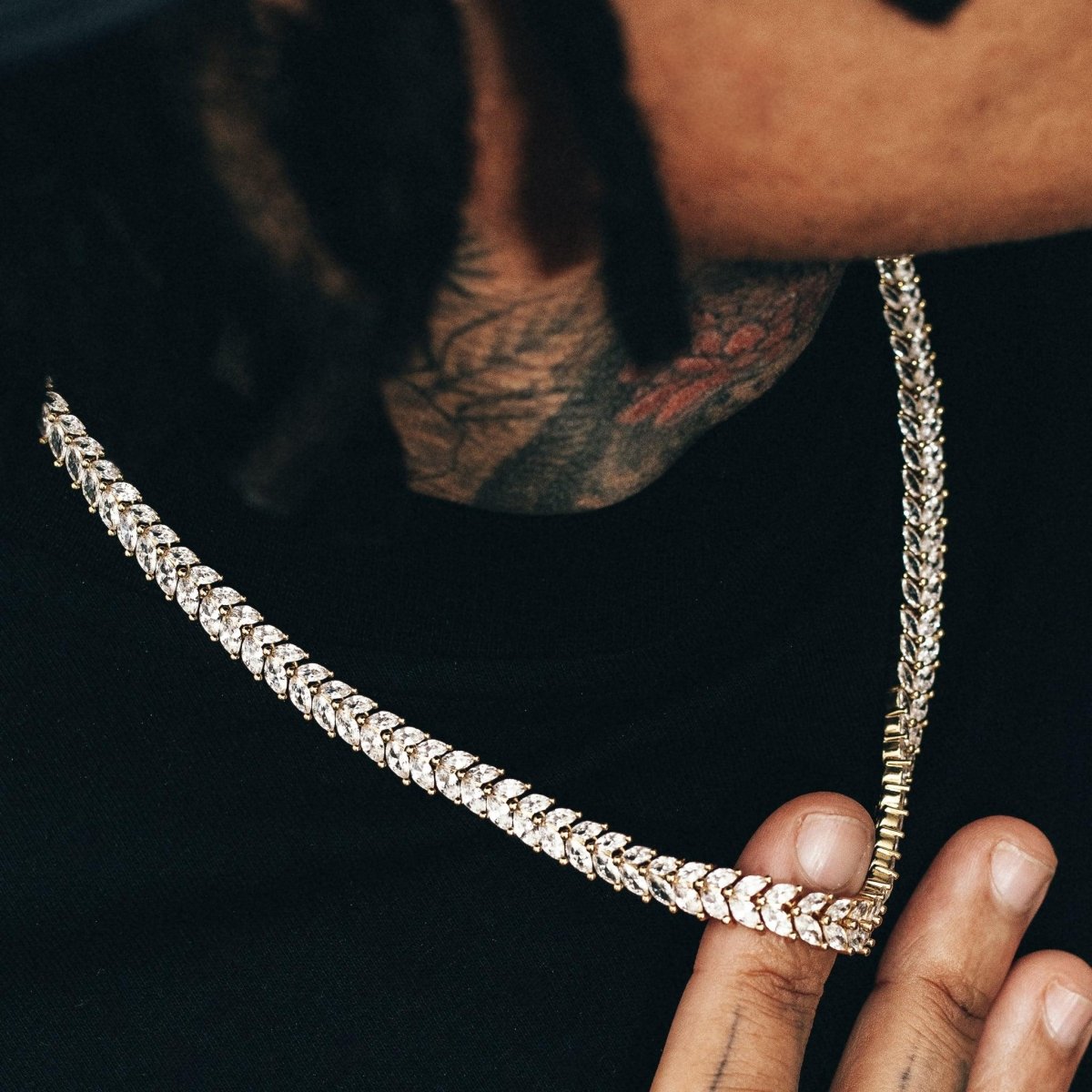
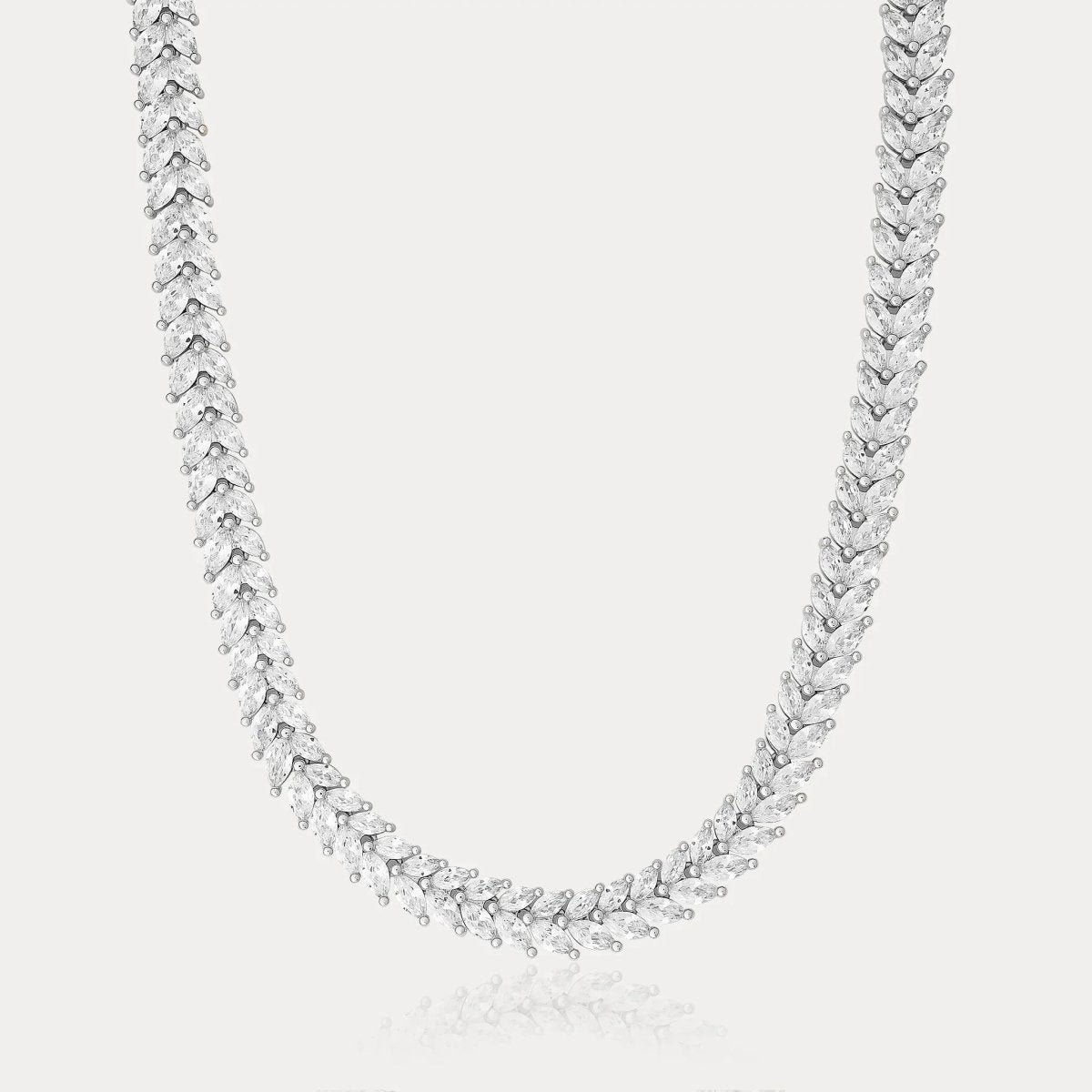

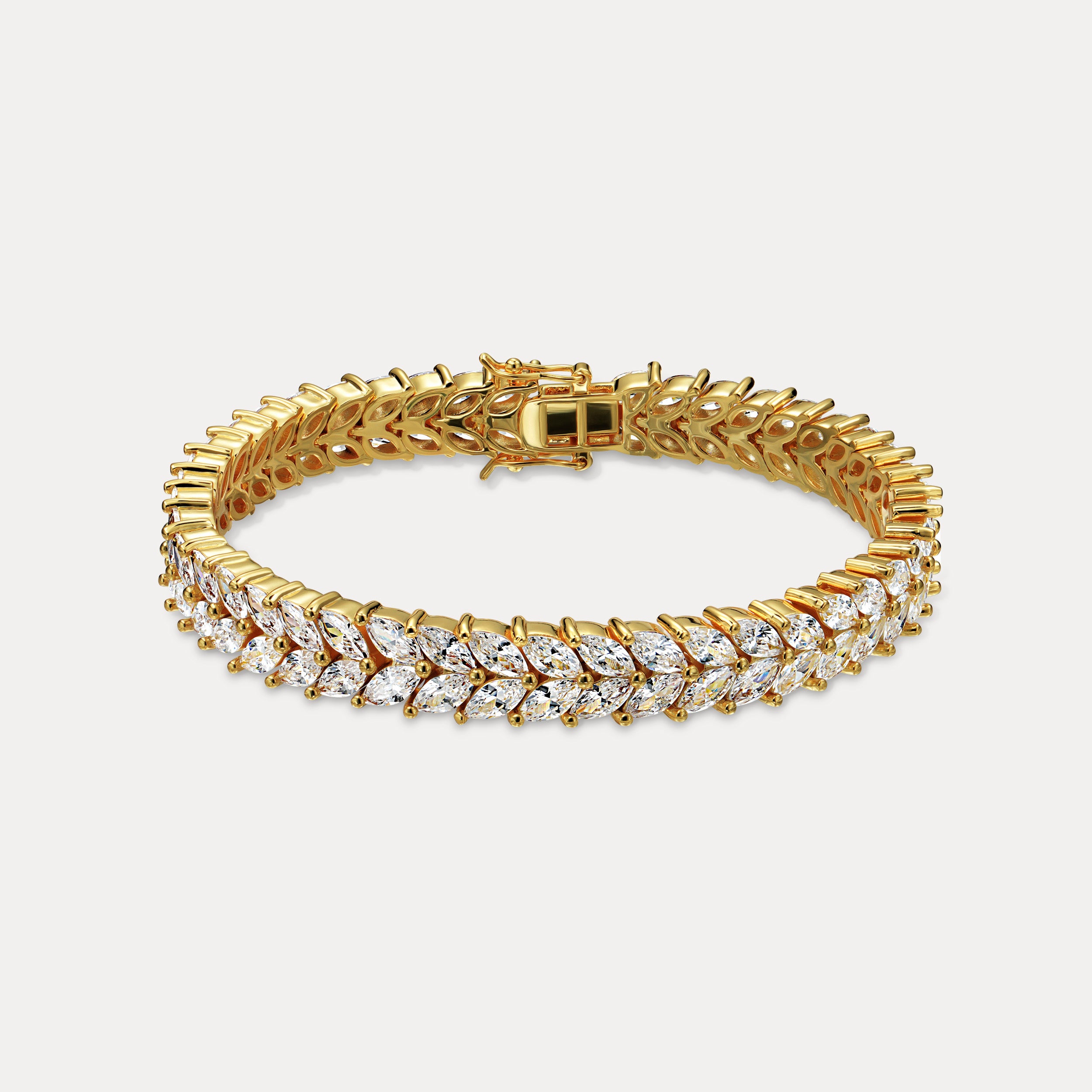

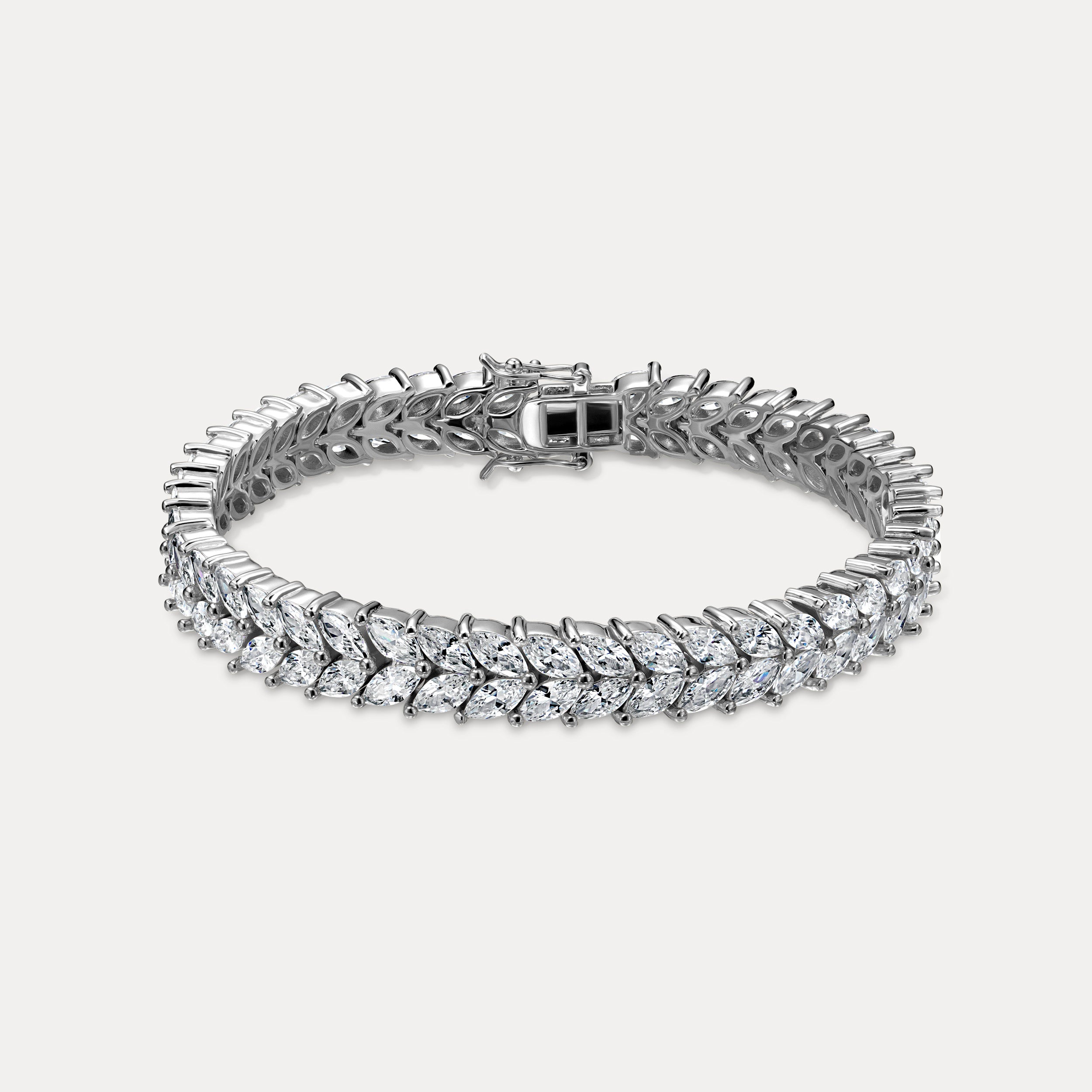
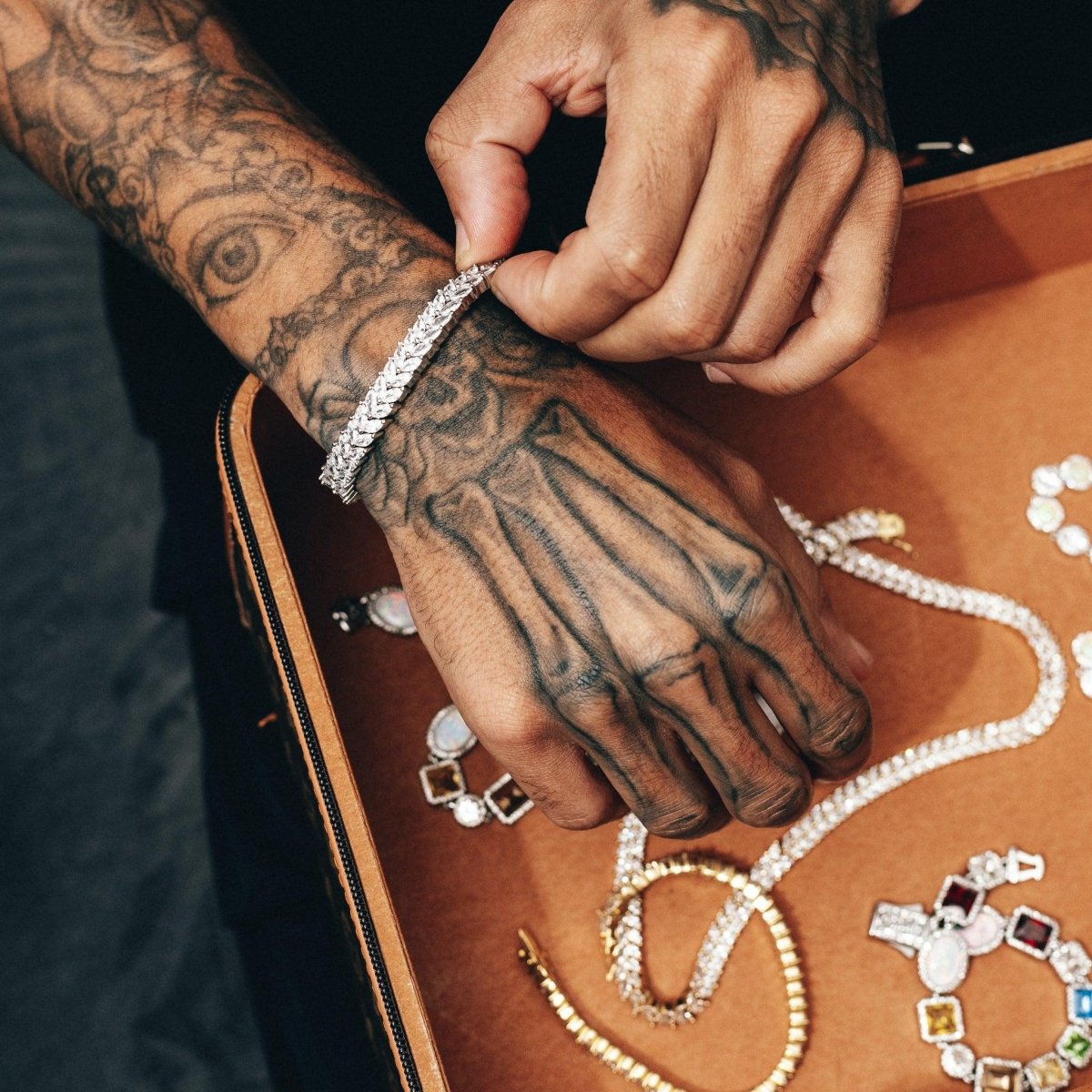
Leave a comment
This site is protected by hCaptcha and the hCaptcha Privacy Policy and Terms of Service apply.